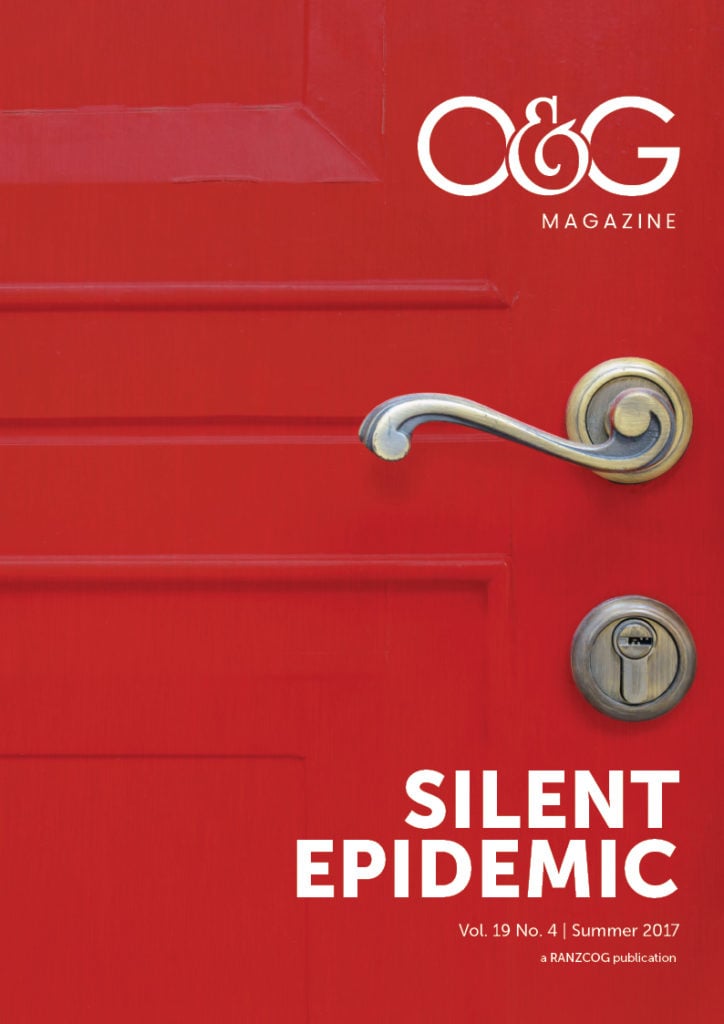A growing number of migrants and refugees who come from countries that practice female genital mutilation/cutting (FGM/C) have settled in Australia over the last few decades. This has been an ongoing area of interest (and occasional controversy) in the obstetrics and gynaecology fields. This article provides a general overview of FGM/C and offers some practical suggestions on how to appropriately engage with women and girls affected by FGM/C.
An overview
According to the World Health Organization (2016) FGM/C ‘comprises all procedures that involve the partial or total removal of external genitalia or other injury to the female genital organs for non-medical reasons. The procedure has no known health benefits.’
It is estimated that 200 million women and girls worldwide have undergone the practice (WHO, 2016). FGM/C is prevalent in 30 countries in Africa and a few countries in Asia (such as, some communities in India, Indonesia, Malaysia and Pakistan) and the Middle East. The age at which it is performed varies according to countries, tribes and circumstances. Through international migration, women and girls affected by FGM/C now live in many countries, including Australia and New Zealand. Therefore, all healthcare providers have a responsibility to provide quality, accessible, culturally safe care to those affected.
Reasons for the practice are complex, arising from a belief system based on cultural and social traditions that impinge on the woman’s social acceptance and marriageability within her community. While some people believe FGM/C to be part of religious requirements, this is in fact not the case.
Types of FGM/C
FGM/C is classified into four types, depending on the severity:
- Type 1: excision of all or part of the clitoris
- Type 2: partial or total removal of the clitoris and the labia minora
- Type 3: removal of the external genitalia and stitching/narrowing of the vaginal opening (infibulation)
- Type 4: pricking, piercing of clitoris or labia. Scraping of vaginal tissue, or introduction of substances into the vagina to cause bleeding, or any other procedure that falls within the above definition
A special note on terminology
The term mutilation is used to reinforce that the practice is a violation of girls’ and women’s human rights. Mutilation emphasises the physical, social and psychological consequences of the act and promotes advocacy to eliminate the practice. However, at the community level, this term can be problematic. The use of the term ‘female genital mutilation’ in a clinical encounter may have the potential to be counterproductive to forming an effective professional relationship with the patient and hence detrimental to the provision of ongoing care for what is a sensitive issue. Different communities use different terms, so we suggest that you explore with each individual what terminology they use for the practice. If unsure, accepted forms of description are traditional female cutting or female circumcision. For this reason, throughout this article we use the term FGM/C.
Health consequences
As previously stated, FGM/C has no known health benefits. Women and girls affected by FGM/C are at a risk of suffering from various complications throughout their lives. Immediate complications can include severe pain, shock, haemorrhage, tetanus, sepsis, urine retention, open sores in the genital region and injury to nearby genital tissue.
Long-term consequences can include dysuria, implantation cysts, dyspareunia, recurrent UTIs and vaginal infections, dysmenorrhoea, pelvic inflammatory disease, infertility, difficulties during pregnancy and childbirth and mental health issues. FGM/C may also have long-term effects on the psychosexual and psychological health of those who have undergone the procedure
It is critical for health professionals to be aware of the negative health consequences that FGM/C can bring and to ensure early identification and appropriate treatment. At the same time, it is also important to consider the women’s health history and not immediately subscribe that all health issues are a result of her FGM/C experience. This can be a difficult balancing act.
The current state
Concentrated efforts have been made to eradicate or abandon the practice in some affected communities in the countries of origin as well as host migrant countries. Despite some improvements, FGM/C persists in some communities.
After decades of work in this field, in 2016, WHO published the first Guidelines on the management of health complication from female genital mutilation with an aim to ‘provide up-to-date, evidence-informed recommendations on the management of health complications from FGM.’
In Australia and New Zealand today, there are a number of FGM/C specific support services (see useful resources for more information). Health professionals can also access many of these services for training and secondary consultations. For example, the Department of Health and Human Services in Victoria funds the Family and Reproductive Rights Education Program (FARREP). Mercy Hospital for Women in Melbourne is one of the FARREP service providers aiming to support women affected by FGM/C, as well as building the capacity of health professionals in this area.
Tips that may assist in providing better care to women affected by FGM/C
Communication:
- Consider health literacy. For example, use plain English, avoid medical jargon, check for understanding
- Engage appropriately qualified female interpreters, if required
- Provide information in the woman’s first language, where available
Engagement and referrals:
- Remind the woman of confidentiality and privacy
- Other significant people may need to be involved in consultations. Always check with a woman if and who they would like to be present
- Provide female health professionals where possible. Alternatively, explain why it may be necessary to see a male health professional. In this case, consider offering a female chaperone
- Build a relationship with your local FGM/C support service
- Refer women who require de-infibulation to hospitals that have established services to support women for this procedure
- For pregnant women, explain options for accessing either antenatal or intrapartum de-infibulation
- If child born is female, remind patient that FGM/C is illegal in Australia
- Alter your approach. For example, women affected by FGM/C may avoid Pap tests. Engage and explain how you can assist, such as by using different sizes of instruments
Providing culturally safe care
In 2014, we conducted a small qualitative study supporting young women who have experienced FGM/C. Our aim was to explore experiences of young women (18–25 years old) from FGM/C affected communities to determine ways to develop, improve and deliver support services that are culturally and age appropriate. A culturally and generationally appropriate worker was employed to conduct semi-structured interviews and focus groups with 12 young women and three key stakeholders who work with the target group.
Thematic data analysis identified the following:
- The young women who participated in the project experienced a lack of awareness and understanding of services that may be available to them.
- They expressed an expectation that GPs and other health professionals will offer support when required
- Access to appropriate, relevant information about FGM/C and supports available was noted by participants as a challenge. They recommended delivering information in a variety of modes, including online and through information sessions.
They also identified a number of features that would be important to them if they were to access services and support. Apart from practical, features such as hours of operation and location, the participants highlighted the need for person-centred, culturally responsive care; access to bi-cultural workers; and emphasis on privacy, confidentiality and trust. While this is not a new finding, our experience tells us that this is not consistently practised.
‘Better understanding is important; sometimes it is difficult for professionals to understand you. It is also important to be treated like an individual rather than being put in a group because you are from a particular community. We all don’t have the same experiences or facing the same issues so it’s important to me to be treated like an individual with her own needs and issues rather than for professionals to assume that I have the same experience or facing the same issues to that of my community.’ (Participant #4)
Participants in this project have lived in Australia for a significant part of their life. They report that they can speak and write English very well and have been educated in Australia. However, it appears that their help-seeking behaviours and health literacy are largely shaped by cultural and family values and traditions.
References
Further reading
- WHO fact sheet on FGM. Available from: www.who.int/mediacentre/factsheets/fs241/en.
- WHO guidelines on the management of health complications from female genital mutilation. 2016. Available from: www.who.int/reproductivehealth/topics/fgm/management-health-complications-fgm/en.
- The National Education Toolkit for FGM/C in Australia (NETFA). 2015. Available from: www.netfa.com.au.
- Mercy Public Hospitals Inc. Supporting young women who have experienced FGM/C. 2014. Melbourne, Australia.
- FGM information for health and child protection professionals in New Zealand http://fgm.co.nz.







Leave a Reply